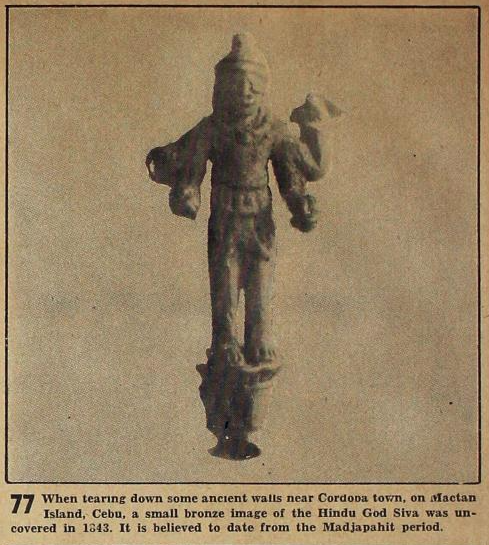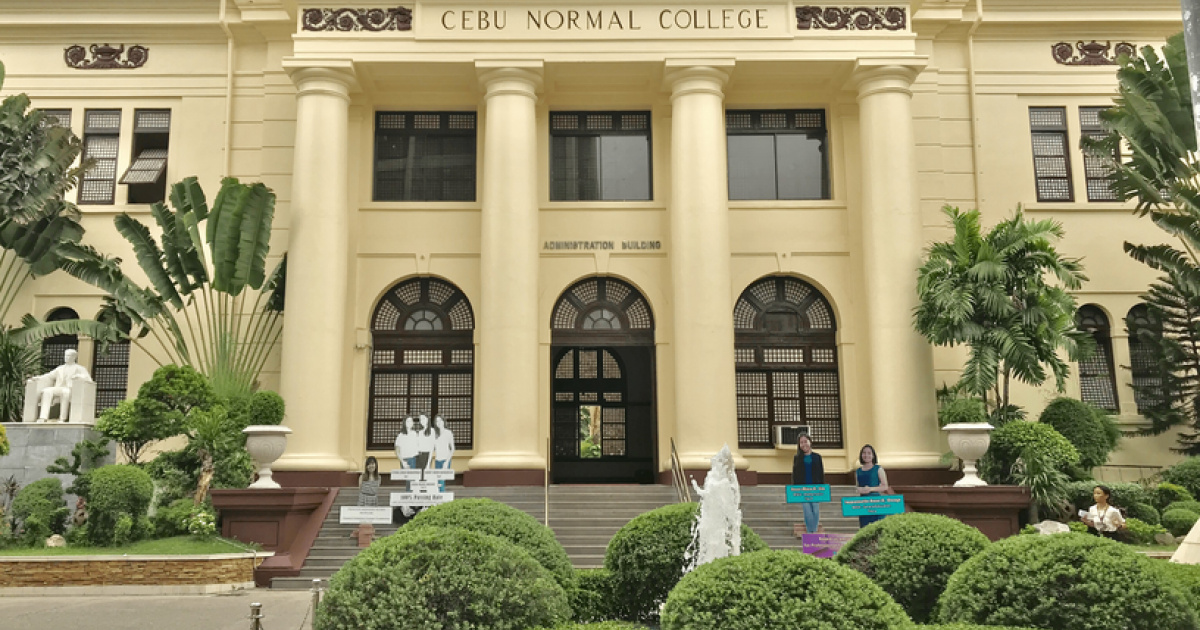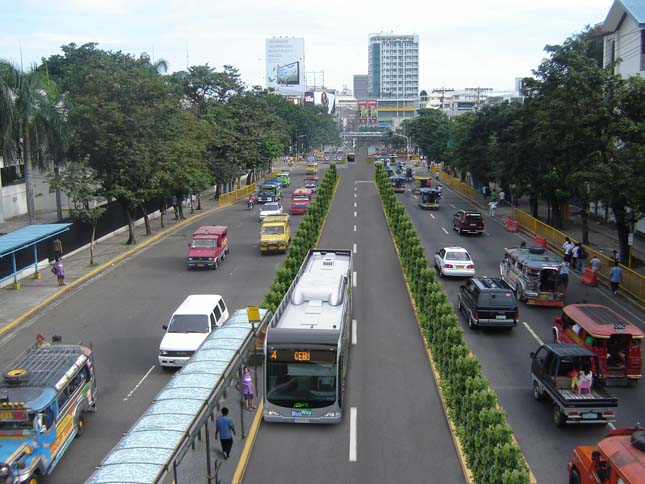|
Winefreda Geonzon
Winefreda Amit Geonzon (also Winefreda Estanero-Geonzon; October 8, 1941 – July 25, 1990) was a Filipina lawyer and social justice activist. She was the founder and executive director of the Free Legal Assistance Volunteers Association (Free LAVA), a service organization that provides free legal assistance for poor prisoners. For her efforts, she received the Right Livelihood Award in 1984 for "giving assistance to prisoners and aiding their rehabilitation." Biography Winefreda was born on October 8, 1941, to Eufronia Pelayo Amit and Ismael Estanero. She was one of seven children; her father died during World War II. She attended elementary school at Bogo Central School and high school at Cebu Roosevelt Memorial College in Bogo. She earned her BS in Elementary Education from the Cebu Normal College. She graduated from the University of the Visayas College of Law in 1976 and was admitted to the Philippine Bar in April 1977. In 1978 Geonzon was appointed the legal aid director ... [...More Info...] [...Related Items...] OR: [Wikipedia] [Google] [Baidu] |
Philippines
The Philippines, officially the Republic of the Philippines, is an Archipelagic state, archipelagic country in Southeast Asia. Located in the western Pacific Ocean, it consists of List of islands of the Philippines, 7,641 islands, with a total area of roughly 300,000 square kilometers, which are broadly categorized in Island groups of the Philippines, three main geographical divisions from north to south: Luzon, Visayas, and Mindanao. With a population of over 110 million, it is the world's List of countries and dependencies by population, twelfth-most-populous country. The Philippines is bounded by the South China Sea to the west, the Philippine Sea to the east, and the Celebes Sea to the south. It shares maritime borders with Taiwan to the north, Japan to the northeast, Palau to the east and southeast, Indonesia to the south, Malaysia to the southwest, Vietnam to the west, and China to the northwest. It has Ethnic groups in the Philippines, diverse ethnicities and Culture o ... [...More Info...] [...Related Items...] OR: [Wikipedia] [Google] [Baidu] |
Cebu City
Cebu City, officially the City of Cebu, is a Cities of the Philippines#Legal classification, highly urbanized city in the Central Visayas region of the Philippines. According to the 2020 census, it has a population of 964,169 people, making it the sixth-most populated city in the nation and the most populous in the Visayas and the Central Visayas Region. It serves as the capital of Cebu wherein it is geographically situated and grouped under the province by the Philippine Statistics Authority, but is one of three cities (together with Lapu-Lapu City, Lapu-Lapu and Mandaue) that are administratively independent of the provincial government and also the largest city within that province. It also serves as the regional center of Central Visayas, and its Metro Cebu, metropolitan area exerts influence on commerce, trade, industry, education, culture, tourism, and healthcare beyond the region, over Central and Eastern Visayas and partly over Mindanao. It is the Philippines' main do ... [...More Info...] [...Related Items...] OR: [Wikipedia] [Google] [Baidu] |
People From Bogo, Cebu
The term "the people" refers to the public or common mass of people of a polity. As such it is a concept of human rights law, international law as well as constitutional law, particularly used for claims of popular sovereignty. In contrast, a people is any plurality of persons considered as a whole. Used in politics and law, the term "a people" refers to the collective or community of an ethnic group or nation. Concepts Legal Chapter One, Article One of the Charter of the United Nations states that "peoples" have the right to self-determination. Though the mere status as peoples and the right to self-determination, as for example in the case of Indigenous peoples (''peoples'', as in all groups of indigenous people, not merely all indigenous persons as in ''indigenous people''), does not automatically provide for independent sovereignty and therefore secession. Indeed, judge Ivor Jennings identified the inherent problems in the right of "peoples" to self-determination, as i ... [...More Info...] [...Related Items...] OR: [Wikipedia] [Google] [Baidu] |
Filipino Women Human Rights Activists
Filipino may refer to: * Something from or related to the Philippines ** Filipino language, a de facto standardized variety of Tagalog, the national language, and one of the two official languages of the Philippines ** Filipinos, people who are natives, citizens and/or nationals of the Philippines, natural-born or naturalized * Filipinos (snack food), a brand cookies manufactured in Europe See also * Filippino (given name) * * * Filipinas (other) Filipinas may refer to: * Women in the Philippines * ''Filipinas, letra para la marcha nacional'', the Spanish poem by José Palma that eventually became the Filipino national anthem. * The original Spanish name, and also used in different P ... {{disambiguation Language and nationality disambiguation pages ... [...More Info...] [...Related Items...] OR: [Wikipedia] [Google] [Baidu] |
Deaths From Cancer In The Philippines
Death is the end of life; the irreversible cessation of all biological functions that sustain a living organism. Death eventually and inevitably occurs in all organisms. The remains of a former organism normally begin to decompose shortly after death. Some organisms, such as ''Turritopsis dohrnii'', are biologically immortal; however, they can still die from means other than aging. Death is generally applied to whole organisms; the equivalent for individual components of an organism, such as cells or tissues, is necrosis. Something that is not considered an organism, such as a virus, can be physically destroyed but is not said ''to die'', as a virus is not considered alive in the first place. As of the early 21st century, 56 million people die per year. The most common reason is aging, followed by cardiovascular disease, which is a disease that affects the heart or blood vessels. As of 2022, an estimated total of almost 110 billion humans have died, or roughly 94% of a ... [...More Info...] [...Related Items...] OR: [Wikipedia] [Google] [Baidu] |
1990 Deaths
This is a list of lists of deaths of notable people, organized by year. New deaths articles are added to their respective month (e.g., Deaths in ) and then linked below. 2025 2024 2023 2022 2021 2020 2019 2018 2017 2016 2015 2014 2013 2012 2011 2010 2009 2008 2007 2006 2005 2004 2003 2002 2001 2000 1999 1998 1997 1996 1995 1994 1993 1992 1991 1990 1989 1988 1987 1986 Earlier years ''Deaths in years earlier than this can usually be found in the main articles of the years.'' See also * Lists of deaths by day * Deaths by year (category) {{DEFAULTSORT:deaths by year ... [...More Info...] [...Related Items...] OR: [Wikipedia] [Google] [Baidu] |
1941 Births
The Correlates of War project estimates this to be the deadliest year in human history in terms of conflict deaths, placing the death toll at 3.49 million. However, the Uppsala Conflict Data Program estimates that the subsequent year, 1942, was the deadliest such year. Death toll estimates for both 1941 and 1942 range from 2.28 to 7.71 million each. Events Below, the events of World War II have the "WWII" prefix. January * January–August – 10,072 men, women and children with mental and physical disabilities are asphyxiated with carbon monoxide in a gas chamber, at Hadamar Euthanasia Centre in Germany, in the first phase of mass killings under the Aktion T4 program here. * January 1 – Thailand's Prime Minister Plaek Phibunsongkhram decrees January 1 as the official start of the Thai solar calendar new year (thus the previous year that began April 1 had only 9 months). * January 3 – A decree (''Normalschrifterlass'') promulgated in Germany by Martin Bormann ... [...More Info...] [...Related Items...] OR: [Wikipedia] [Google] [Baidu] |
Cebu City Council
The Cebu City Council (Filipino language, Filipino: Sangguniang Panlungsod ng Cebu) is the legislature of Cebu City, Philippines. The legislative body is composed of 18 councilors, with 16 councilors elected from Cebu City's two Legislative districts of Cebu City, councilor districts and two elected from the ranks of barangay (neighborhood) chairmen and the Sangguniang Kabataan (youth councils). The council's Chairperson, presiding officer is the vice-mayor (elected by the city). The council is responsible for creating laws and ordinances under the jurisdiction of Cebu City. Although the Mayor of Cebu City, mayor can veto proposed bills, the council can override the veto with a two-thirds supermajority. History In 1937, four municipalities (including Cebu) were officially converted into cities. With the largest population and number of registered voters at the time, Cebu City was allocated eight members for its city council. On February 24, 1937, at the promulgation of the Cebu ... [...More Info...] [...Related Items...] OR: [Wikipedia] [Google] [Baidu] |
Cebu IT Park
The Cebu IT Park (formerly known as ''Asiatown IT Park'') is a business park in Cebu City, Philippines. The park is envisioned to attract locators in the information technology industry. It is developed by Cebu Property Ventures and Development Corporation, a subsidiary of Cebu Holdings, Inc., in turn a wholly-owned subsidiary of Ayala Land. History The site of where the Cebu IT Park is on used to be the site of the old Lahug Airport, which opened in 1938 before suspending operations in 1966, when Cebu's airport was transferred to the island of Mactan. One event of historical note occurred on February 19, 1981, when Pope John Paul II, Pope John Paul held an open-air Papal Mass on the airport's runway. The airport was finally closed in 1989, after it was acquired by Cebu Property Ventures, Inc., a subsidiary of Philippine property developer Ayala Land, just a couple of years after the same developer acquired the nearby Club Filipino golf course (which would later become the site ... [...More Info...] [...Related Items...] OR: [Wikipedia] [Google] [Baidu] |
Cebu Normal University
Cebu Normal University (), also referred to by its acronym CNU, is a state research university in Cebu City, Philippines established in 1902. CNU is designated by the Commission on Higher Education (CHED) as Center of Excellence (COE) in both Nursing Education and Teacher Education. History Early history CNU was established in 1902 by ''Act No. 74'' of the Philippine Commission as a summer institute of the Philippine Normal University (PNS, then a normal school). It was then called "Cebu Normal School" and was the located at Colegio Logarta building (later Hijos del Pueblo) at the Colon Street by which the Cebu provincial government pays the amount of ₱200 monthly. In 1906, the school became an adjunct to the then Cebu Provincial High School (now Abellana National School) and transferred to the new site. In 1924, the school became independent of PNS, obtained the normal school status and moved to its current site in Osmeña Boulevard, Cebu City. In 1926, it produced i ... [...More Info...] [...Related Items...] OR: [Wikipedia] [Google] [Baidu] |
List Of Streets In Cebu
This is a partial list of streets or roads in Cebu, Philippines. Background Ever since the early American Period in Cebu, street names from former Spanish colonial leaders were renamed, mostly at that time, after revolutionaries who were either executed or died while fighting the Spaniards or the Americans. Some streets were named after famous Filipino leaders, and as well as the first elected leaders of a certain area, town, barangay or a city. Cebu also boasts street names named after philanthropists, common civilian jobs like teachers, civic leaders, priests and exemplary government officials. Rarely, streets in Cebu are named after foreigners, but if it was, it was done in commemoration of either heroic deeds, or help in the development of the island and even played a part in the Philippine history. Majority of the common streets in Cebu were already present during the Spanish Era, but many more alleyways were constructed as the years passed by (in conjunction with the growth ... [...More Info...] [...Related Items...] OR: [Wikipedia] [Google] [Baidu] |




